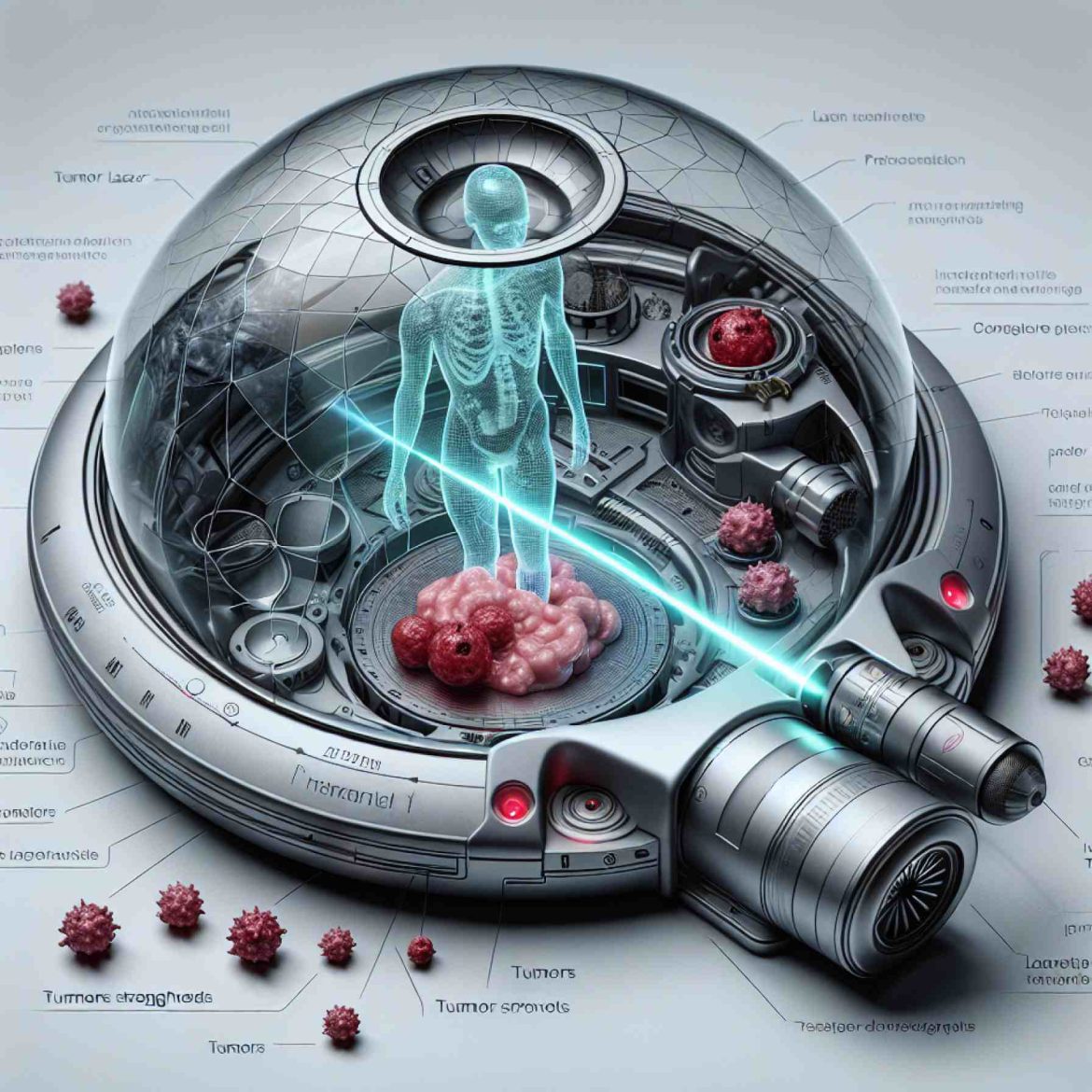- THIO, a novel compound by MAIA Biotechnology, targets Non-Small Cell Lung Cancer (NSCLC) by disrupting the telomerase function in cancer cells.
- THIO integrates into telomeric DNA, inducing self-destructive chaos within cancer cells and triggering cellular alarms.
- It activates the cGAS/STING pathway, enhancing the body’s innate immune response and coordinating an adaptive T-cell attack.
- In preclinical models, THIO primes cancer cells for synergistic effects with PD-(L)1 inhibitors, leading to tumor regression and immune memory formation.
- THIO offers a promising treatment option for NSCLC patients who progress beyond current immunotherapies, representing a targeted and personalized approach.
- This breakthrough highlights the fusion of molecular precision with human immunity, signifying a new era in cancer treatment.
Beneath the microscopic battlefield where the body’s immune cells clash with malignant invaders, a novel biopharmaceutical marvel emerges—MAIA Biotechnology’s groundbreaking compound, THIO. This tiny yet potent molecule is crafted with precision to confront a formidable adversary: Non-Small Cell Lung Cancer (NSCLC), a disease notorious for resisting conventional treatments.
Picture telomeres—those protective end-caps on chromosomes akin to the plastic tips of shoelaces. In cancer cells, telomerase, an enzyme famously revived from dormancy, plays a pivotal role in mending these telomeres, granting the malignant cells virtual immortality. Here, in this relentless cycle of repair, THIO swoops in, wielding its sword of innovation. As a modified nucleotide, THIO conjures an alchemical reaction within the cancerous cells, transforming telomerase from a savior into a saboteur. As the enzyme incorporates THIO into telomeric DNA, it triggers self-destructive chaos. The damage accumulates quietly at first but snowballs into a cacophony of cellular alarms.
This first-in-class agent orchestrates a symphony of destruction—telomeric fragments scatter, aggregating into ominous micronuclei within the cell’s cytoplasm. These molecular grenades ignite an immune revolution, unleashing the cGAS/STING pathway, a powerful messenger that rallies the body’s innate defenses. Yet the magic doesn’t stop there. THIO primes the battleground for the body’s adaptive warriors—the T-cells—igniting a coordinated rebuttal against the cancer.
In preclinical models, THIO sets the stage for a breathtaking second act. When followed by PD-(L)1 inhibitors—already the stars in the arena of immunotherapy—the scene transforms. These inhibitors, which had been the shield-bearers in the fight, now advance behind THIO’s groundwork, inducing not just tumor regression but crafting a resilient immune memory tailored specifically to the cancer’s form. It’s as though the body not only remembers the intruders but holds the blueprint for counterattack, should the disease dare to return.
For those battling NSCLC beyond frontline therapies, THIO extends a hopeful lifeline. As these patients progress beyond current checkpoint inhibitors, this novel approach offers not just another treatment, but a targeted strategy—a customized assault on one of cancer’s most tenacious bastions.
The story of THIO is not just one of scientific ingenuity but a testament to the relentless pursuit of a cure. It promises to redefine possibilities, merging the power of molecular precision with the organic might of human immunity—a true harbinger of a new age in cancer treatment. Embrace this evolving frontier where science and hope converge, where every treatment is tailored, every patient empowered, and every battle inching closer to victory.
Unlocking the Future of Cancer Treatment: The Revolutionary Potential of THIO in Combating Non-Small Cell Lung Cancer
Introduction
MAIA Biotechnology’s innovative approach to tackling Non-Small Cell Lung Cancer (NSCLC) with THIO is poised to revolutionize cancer treatment. This groundbreaking compound not only intervenes in the cellular repair processes but turns them against the cancer cells themselves, paving the way for new therapeutic strategies. Let’s dive into further details about THIO, its mechanism, market potential, and the future of cancer treatments.
THIO’s Unique Mechanism Against NSCLC
THIO operates uniquely by disrupting the repair process of telomeres in cancer cells. Here are key insights into how it works:
– Targeting Telomerase: THIO sabotages the telomerase enzyme. As telomerase incorporates THIO into the telomeric DNA, it paradoxically damages the cancer cells rather than aiding them, transforming an agent of immortality into a harbinger of cell death.
– Activating the Immune Response: THIO activates the cGAS/STING pathway, which is crucial in unleashing the body’s natural defense mechanisms. This action primes the cell environment for subsequent immunotherapy treatments, making them more effective.
– Building Immune Memory: When used in conjunction with PD-(L)1 inhibitors, THIO promotes a robust immune memory, reducing the likelihood of cancer recurrence.
Controversies & Limitations
While THIO’s clinical trials show promise, several factors require consideration:
– Potential Side Effects: As with many cancer treatments, potential side effects need comprehensive evaluation to ensure patient safety.
– Long-Term Outcomes: Long-term data is essential to determine the sustainability of resulting immune memory and the potential need for additional interventions.
– Cost Implications: As an advanced form of treatment, THIO may entail high costs, affecting accessibility for some patients.
Market Forecasts & Industry Trends
The market for NSCLC therapies is expected to grow substantially, driven by innovative treatments like THIO:
– Increasing Incidences: NSCLC continues to be a prevalent cancer form worldwide, necessitating novel treatment regimens.
– Demand for Targeted Therapies: As patient outcomes improve with precision medicine, there’s an increasing shift towards targeted therapies over traditional chemotherapy.
– Healthcare Investment: Pharmaceutical companies are investing heavily in biopharmaceutical research, anticipating a surge in demand for advanced cancer therapies.
Real-World Use Cases
Once fully developed and approved:
– Treatment-Resistant Cases: THIO will be particularly useful for patients who have not responded to frontline therapies.
– Combination Therapy: THIO’s compatibility with other immunotherapies can create synergistic effects, enhancing overall treatment efficacy.
Actionable Recommendations
1. Stay Informed: Keep updated with the latest research to understand new treatment options.
2. Consult with Specialists: For those battling NSCLC, discuss emerging therapies and trials with an oncologist to evaluate eligibility.
3. Advocate for Accessibility: Support initiatives promoting affordable access to innovative treatments.
Conclusion
The advent of THIO marks an exciting milestone in cancer therapy, offering a beacon of hope for those facing drug-resistant NSCLC. By turning the cancer cells’ repair mechanism against them, THIO not only disrupts the tumor’s survival strategy but also enhances the body’s natural defenses. As research progresses, this approach has the potential to redefine how we perceive and treat cancer, aligning science and patient care towards a future of tailored healthcare solutions.
For more information on advancements in cancer treatment, visit Mayo Clinic.



